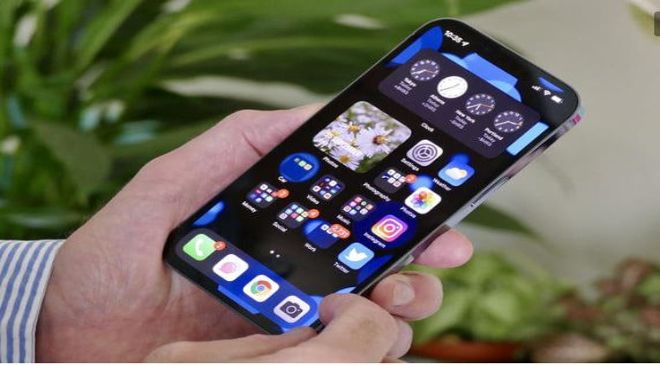Remember when the first iPhone came out in 2007 and it cost a whopping $499? That was a lot of money back then, but it was just the beginning. The price of Apple’s iconic product has steadily — sometimes dramatically — increased, due to a wide array of factors, like improved technology and features as well as inflation. As a publicly listed company, Apple also faces consistent pressure to keep growing its booming iPhone business, which brings in nearly half its revenue. But how much more can Apple charge for its iPhones?
The iPhone has only become more expensive over the last 15 years, even when you adjust for inflation. The trend of rising iPhone prices, however, is not consistent or predictable. Apple adjusts its pricing strategy based on various factors, including consumer demand, competitive pressures and inflation, which tends to increase the cost of producing an iPhone.
Last year, Apple increased prices last year outside the US, in some Asian and European countries whose currencies had dropped against the dollar ahead of the 2022 iPhone event. Shoppers in the UK had to contend with a price increase of approximately $85 for the iPhone 14, which starts at £849 compared to the iPhone 13’s price tag of £779. Meanwhile, people in Japan were dealt one of the highest prices globally, approximately $150 more, due mostly to a slumping yen. But the iPhone 14 didn’t see a price hike in mainland China, Apple’s largest market outside the US, despite a drop in the country’s yuan currency. Still, major retailers reportedly slashed prices of iPhone 14 models amid a slump in smartphone demand there.
How Apple will price the upcoming iPhone 15 isn’t guaranteed until Apple unveils those details at its event in September. Industry analysts CNET interviewed weeks after Apple’s 2022 event said it will be tough for the tech giant to increase prices for the regular iPhone models in 2023, given the looming risk of a recession at the time, as well as Apple’s success with the expansion of installment plans.
“I’m sure that the engineering team would love to cram more sophisticated components into the product as competitive differentiators,” said the International Data Corporation’s Bryan Ma in November last year. “But if the macroeconomic gloom is still lingering one year from now, then that will be at odds with the ability of consumers to keep up, even if Apple fans tend to be more resilient and premium users.”
How the iPhone’s price has changed over time
Today’s iPhones are significantly more expensive than Apple’s early models. In its 16-year lifetime, however, the steepest series of price increases occurred over the last seven years. In 2016, the price climbed up to $649 for the iPhone 7. The following year, Apple charged $50 more for the iPhone 8, and in 2018, the iPhone XR was $50 more than that (starting at $749).
When Apple released the iPhone 11 in 2019, the price dropped back to $699, making it the lowest-priced phone the tech giant had launched in two years at the time. But that break didn’t last long. The year after, the iPhone hit its highest price ever: $829 for the iPhone 12 — partially thanks to the introduction of 5G. That means in six years, the starting price for a “regular” iPhone has increased $180 at face value, without adjusting for inflation. (You can scroll down to the bottom to our chart that tracks the price changes of Apple’s iPhone from 2007 to 2022.)
To be fair, Apple hasn’t increased the prices of the regular iPhone and the pro iPhones in the two years since the iPhone 12. But it has employed clever pricing strategies that make it more expensive to buy into the flagship iPhone lineup. For instance, Apple debuted the iPhone 12 Mini in 2020. It retailed for $729 unlocked which dropped to $699 if you activated it on a carrier at the time of purchase. That means the Mini sells for the exact same price as the previous year’s iPhone 11 — even though the former is a smaller device positioned as a more budget-friendly option. Fast-forward to 2022, and suddenly the Mini is missing from the iPhone lineup. (Apple discontinued it in favor of the iPhone 14 Plus.) Without an iPhone 14 Mini, the price of buying into the iPhone 14 series is now $829. That’s higher than last year’s buy-in price by $100.
For the iPhone 15, the buy-in price of the upcoming flagship lineup or the price of the regular iPhone 15, is currently expected to remain the same, according to analysts and rumors. However, as mentioned earlier, the prices of the Pro models could see an increase whether by way of a higher base storage variant or an actual price hike.
Read More – The Horoscope For Saturday, September 3, As Venus Retrograde Finally Ends
According to a MacRumors report, citing Barclays analyst Tim Long, the iPhone 15 Pro could cost $100 more than the iPhone 14 Pro, while the iPhone Pro Max price hike could be in the range of $100 to $200 more. A similar claim has been made by Jeff Pu, of investment firm Haitong International Securities, who said the iPhone 15 Pro Max specifically is due for a price increase, according to another MacRumors report. This is based on the assumption that Apple will add more features and components to the Pro models, such as a new periscope camera, a titanium frame and a 3-nanometer A17 Bionic chip.
Despite a possible increase in iPhone prices stateside, people in the US don’t tend to feel the pinch as much since carriers typically offer discounts and subsidies, shaving hundreds of dollars off the list price to encourage upgrades. In fact, for the iPhone 14 lineup, AT&T offered a “free” iPhone 14 when you trade in an older iPhone. Trading in an iPhone 13 Pro Max 128GB will net you the full deal value as long as everything works and nothing is broken. This year, it is likely that AT&T will “slash” $1,000 off the iPhone 15 Pro Max given its track record of doing so in recent years.
Read More – The ‘Harry Potter’ cast, ranked by net worth
It’s no secret that phone prices have soared as technology has progressed. New features like 5G, advanced cameras and foldable displays all make for more expensive phones. Thankfully, even Apple’s priciest iPhone is still cheaper than foldable phones like the Galaxy Z Fold 5, which starts at $1,800 without a trade-in. But it’s getting close. Case in point: The highest-storage variant of the iPhone 14 Pro Max (1TB) will set you back $1,599 — and that’s before you throw in sales tax, AppleCare, a phone case and anything else you might need to use your new iPhone.





























